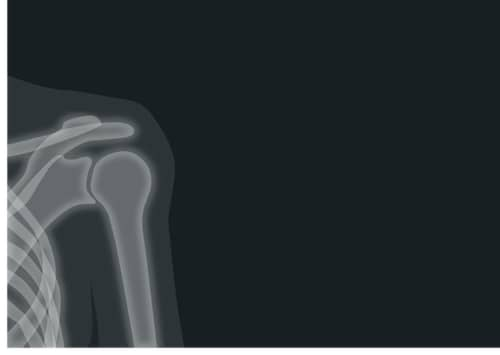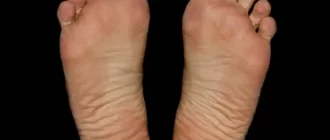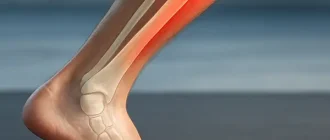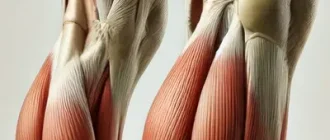Why does your pain get worse with sitting, lifting, or bending? If you’ve ever experienced pain that intensifies when you sit down, bend over, or lift something, you’re not alone. Millions of people experience these symptoms daily, and understanding the causes can help you better manage your pain and make more informed decisions about your health. Let’s explore why these activities are particularly problematic and what you can do to alleviate the discomfort.
The Anatomy of the Pain: What Is Happening in Your Back?
The lower back, or lumbar spine, is a complex structure that supports much of your body weight and allows for movement and flexibility. The spine is made up of bones (vertebrae), muscles, ligaments, and intervertebral discs—cushions that act as shock absorbers between the vertebrae. Pain that worsens with sitting, bending, or lifting often originates in these structures.
Spinal Pressure During Different Activities
| Activity | Pressure on Spine (Relative Units) |
|---|---|
| Lying Down | 25 |
| Standing Upright | 100 |
| Sitting Upright | 140 |
| Bending Forward | 150 |
| Lifting with Poor Form | 220 |
This histogram illustrates the pressure exerted on the spine during different activities, highlighting how improper posture and certain movements can significantly increase the risk of back pain and injury.
When you sit, especially for prolonged periods, the pressure on the discs in your lower back increases by as much as 40% compared to standing. This extra pressure can cause pain, particularly if a disc is already compromised by herniation or degeneration. Similarly, bending and lifting put a lot of stress on the spine, which can aggravate any existing problems in your back.
Did you know?
According to the American Academy of Orthopaedic Surgeons, about 80% of adults experience lower back pain at some point in their lives, and sitting is one of the most common triggers (source).
Common Causes of Pain That Gets Worse with Sitting, Lifting, or Bending
Several conditions could explain why you experience more pain during these activities. Let’s dive into some of the most common causes:
1. Herniated Disc
A herniated disc occurs when the soft inner part of a spinal disc bulges out through a tear in the outer ring. This can cause intense pain, especially during activities like sitting or bending, which put extra pressure on the disc. A herniated disc can also irritate nearby nerves, leading to shooting pain down your leg (sciatica).
2. Degenerative Disc Disease (DDD)
As we age, our intervertebral discs lose water content and become less flexible. This condition, known as degenerative disc disease, can lead to pain that gets worse with movement, particularly bending or lifting. Studies show that DDD affects roughly 40% of people over the age of 40.
Did you know?
By the age of 60, around 60% of adults will experience some degree of disc degeneration, even if they aren’t symptomatic.
Prevalence of Lower Back Pain by Age Group
| Age Group | Prevalence of Back Pain (%) |
|---|---|
| Under 30 | 30% |
| 30-40 | 40% |
| 41-50 | 50% |
| 51-60 | 60% |
| Over 60 | 70% |
This histogram shows the prevalence of lower back pain across different age groups, highlighting the increasing risk as people age.
3. Muscle Strain or Ligament Sprain
Muscle strain or ligament sprain can also cause pain that is aggravated by bending or lifting. If you’ve recently overexerted yourself or lifted something heavy improperly, this could be the culprit. Poor lifting mechanics often lead to this kind of pain, making it crucial to use proper techniques.
4. Spinal Stenosis
Spinal stenosis is a narrowing of the spinal canal that puts pressure on the nerves. This condition is more common in people over 50 and can cause pain that gets worse with standing, sitting, or bending. People with stenosis often find relief when leaning forward, such as when pushing a shopping cart, because this helps open up the spinal canal.
The Science of Pressure: How Sitting, Lifting, and Bending Affect Your Spine
The pressure inside your intervertebral discs changes significantly depending on your posture. For instance, studies show that sitting places nearly double the pressure on your discs compared to standing. Here’s a quick breakdown of how different activities affect disc pressure:
| Activity | Pressure on Spine (Relative Units) |
|---|---|
| Lying down | 25 |
| Standing upright | 100 |
| Sitting upright | 140 |
| Bending forward | 150 |
| Lifting with poor form | 220 |
The data above illustrates why sitting, lifting, and bending are notorious for triggering back pain. When lifting improperly, such as bending at the waist rather than at the knees, the pressure on your spine can more than double, leading to acute pain or injury.
Did you know?
Proper lifting technique—bending at the knees rather than the waist—can reduce spinal pressure by up to 30%, significantly decreasing the risk of injury.
How to Relieve Pain: Tips for Sitting, Lifting, and Bending Safely
If pain during these activities is a persistent problem, here are some practical steps you can take:
- Improve Your Posture: Use an ergonomic chair that supports your lower back, and avoid slouching. Consider using a lumbar roll if you must sit for long periods.
- Take Frequent Breaks: If your job requires prolonged sitting, stand up and stretch every 30 minutes. Movement helps reduce the pressure on your discs.
- Learn Proper Lifting Techniques: Always lift with your knees, not your back. Keep the load close to your body and avoid twisting while lifting.
- Strengthen Core Muscles: A strong core helps stabilize your spine, reducing the strain on your lower back during activities like lifting and bending. Simple exercises like planks can be helpful.
- Hot and Cold Therapy: Applying a cold pack can help reduce inflammation, while heat can relax stiff muscles, providing some relief.
Back Pain Prevalence by Duration of Sedentary Work
| Sedentary Work Duration | Prevalence of Back Pain (%) |
|---|---|
| Less than 4 hours | 20% |
| 4-6 hours | 40% |
| 6-8 hours | 60% |
| More than 8 hours | 80% |
This histogram highlights the prevalence of back pain among people with varying durations of sedentary work, emphasizing the increased risk with prolonged sitting.
Our Editorial Team’s Advice
Pain that gets worse with sitting, lifting, or bending is a common issue but doesn’t have to control your life. By understanding the underlying causes and adopting better habits, such as proper posture, safe lifting techniques, and regular exercise, you can significantly reduce your discomfort. Remember, staying active and listening to your body are crucial to maintaining back health—prevention is always better than treatment.
About the Author
Reyus Mammadli is the author of this health blog since 2008. With a background in medical and biotechnical devices, he has over 15 years of experience working with medical literature and expert guidelines from WHO, CDC, Mayo Clinic, and others. His goal is to present clear, accurate health information for everyday readers — not as a substitute for medical advice.







